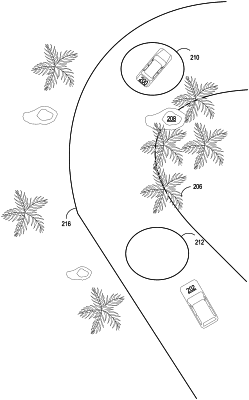| CPC B60W 50/14 (2013.01) [B60W 60/0011 (2020.02); B60W 60/0015 (2020.02); G05D 1/0094 (2013.01); G06V 20/56 (2022.01); B60W 2050/143 (2013.01); G05D 2201/0213 (2013.01)] | 20 Claims |

|
1. A method for prioritizing occlusion information, comprising:
observing, at a first location of an ego agent, a spatial area from a first viewpoint, at the first location, of one or more sensors associated with the ego agent;
observing, at a second location of the ego agent, the spatial area from a second viewpoint of the one or more sensors associated with the ego agent;
determining the spatial area was occluded at the first viewpoint based on observing the spatial area from the second viewpoint;
determining a level of risk associated with the spatial area based on observing the spatial area at the second location;
prioritizing transmission of occlusion information corresponding to the spatial area based on the determined level of risk; and
transmitting, to a target agent, the occlusion information corresponding to the spatial area based on the priority.
|